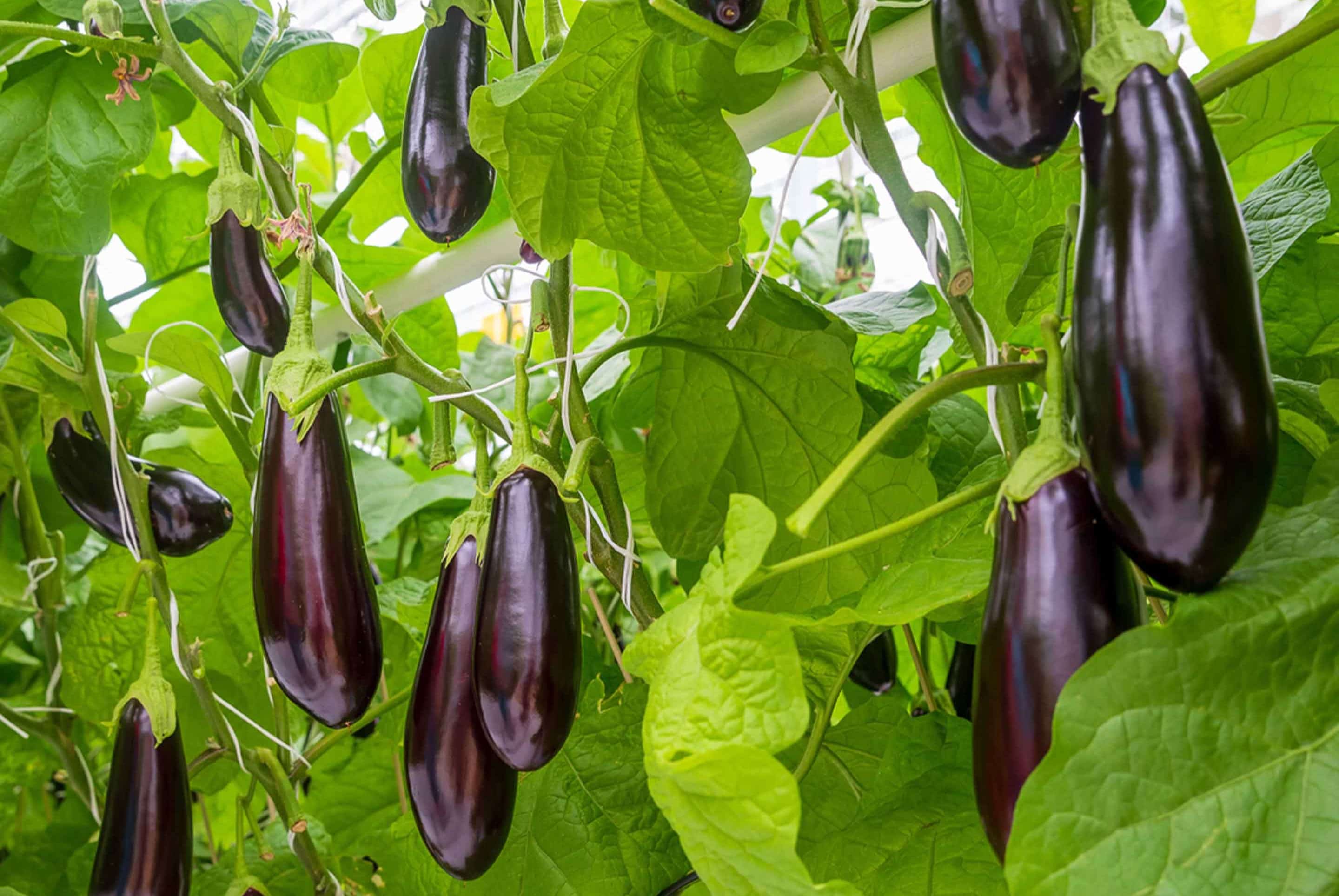
Aubergines, also known as eggplants, are more than just a staple in Mediterranean cuisine. These glossy, purple veggies pack a punch with their unique flavor and numerous health benefits. But did you know they belong to the nightshade family, which includes tomatoes and potatoes? Aubergines have been cultivated for thousands of years, originating in India before spreading to other parts of the world. They come in various shapes, sizes, and colors, from deep purple to white. Rich in antioxidants, vitamins, and minerals, aubergines can boost heart health, aid digestion, and even help with weight management. Whether grilled, baked, or sautéed, these versatile vegetables can transform any dish into a culinary delight. Ready to learn more? Here are 30 fascinating facts about aubergines that will make you appreciate this humble vegetable even more.
Key Takeaways:
- Aubergines, also known as eggplants, are not only delicious but also packed with health benefits like being low in calories, rich in fiber, and containing antioxidants. They are versatile in cooking and can even be grown in your own garden.
- Did you know that aubergines are technically berries, not vegetables? They come in various colors and have a rich history dating back to ancient India. Aubergines have also made their mark in popular culture, from emojis to works of art and literature.
What is an Aubergine?
Aubergines, also known as eggplants, are a staple in many cuisines around the world. Their unique texture and flavor make them versatile in various dishes. Let's dive into some fascinating facts about this intriguing vegetable.
-
Aubergines belong to the nightshade family, which includes tomatoes, potatoes, and bell peppers.
-
The name "aubergine" is commonly used in British English, while "eggplant" is the term used in American English.
-
Aubergines are technically berries, not vegetables, because they contain seeds and develop from the flowering part of the plant.
-
The first known cultivation of aubergines dates back to ancient India, around 2,000 years ago.
-
Aubergines come in various colors, including purple, white, green, and even striped varieties.
Nutritional Benefits of Aubergines
Aubergines are not just tasty; they also pack a punch when it comes to nutrition. Here are some health benefits you might not know about.
-
Aubergines are low in calories, making them an excellent choice for those looking to maintain a healthy weight.
-
They are rich in fiber, which aids in digestion and helps maintain a healthy gut.
-
Aubergines contain antioxidants like nasunin, which protect cells from damage caused by free radicals.
-
They are a good source of vitamins and minerals, including vitamin C, vitamin K, and potassium.
-
The skin of aubergines is particularly rich in antioxidants, so it's beneficial to eat them unpeeled.
Culinary Uses of Aubergines
Aubergines are incredibly versatile in the kitchen. They can be prepared in numerous ways to suit different tastes and cuisines.
-
Aubergines can be grilled, roasted, fried, or baked, making them a versatile ingredient in many dishes.
-
They are a key ingredient in Mediterranean dishes like moussaka and ratatouille.
-
In Asian cuisine, aubergines are often used in stir-fries and curries.
-
Aubergines can be used as a meat substitute in vegetarian and vegan dishes due to their hearty texture.
-
Baba ganoush, a popular Middle Eastern dip, is made from roasted aubergines.
Growing Aubergines
If you're interested in gardening, growing aubergines can be a rewarding experience. Here are some tips and facts about cultivating them.
-
Aubergines thrive in warm climates and require plenty of sunlight to grow.
-
They need well-drained soil rich in organic matter for optimal growth.
-
Aubergine plants can grow up to 4 feet tall, so they need ample space in the garden.
-
It's essential to water aubergines regularly, but avoid waterlogging the soil.
-
Pests like aphids and spider mites can affect aubergine plants, so regular monitoring is crucial.
Fun and Unusual Facts About Aubergines
Aubergines have some quirky and lesser-known aspects that make them even more interesting.
-
In Renaissance Europe, aubergines were called "mad apples" because people believed they could cause insanity.
-
The world's heaviest aubergine weighed over 6 pounds and was grown in the UK.
-
Aubergines have been used in traditional medicine to treat various ailments, including diabetes and asthma.
-
The word "aubergine" comes from the Arabic word "al-b??inj?n," which was adopted into French and then English.
-
In some cultures, aubergines are considered a symbol of prosperity and fertility.
Aubergines in Popular Culture
Aubergines have made their mark not just in the kitchen but also in popular culture.
-
The aubergine emoji is often used in digital communication to represent something entirely different from the vegetable.
-
Aubergines have appeared in various works of art, symbolizing different themes from abundance to mystery.
-
In literature, aubergines have been mentioned in classic texts, including "One Thousand and One Nights."
-
Some cultures use aubergines in festivals and celebrations, showcasing their importance in local traditions.
-
The aubergine has even inspired fashion, with its deep purple hue being a popular color in clothing and accessories.
Aubergine's Final Bite
Aubergines, or eggplants, pack a punch in both nutrition and versatility. These purple wonders are rich in antioxidants, fiber, and vitamins, making them a great addition to any diet. Whether grilled, baked, or turned into a delicious dip, they offer endless culinary possibilities. Their low-calorie content makes them a favorite for those watching their weight. Plus, their unique texture can mimic meat in vegetarian dishes, adding heartiness without the extra calories.
From their origins in India to their global popularity today, aubergines have a fascinating history. They’ve been used in traditional medicine and even as a natural dye. So next time you’re at the grocery store, grab an aubergine and experiment with a new recipe. You might just find your new favorite dish. Remember, eating healthy doesn’t have to be boring—sometimes, it can be downright delicious!
Frequently Asked Questions
Was this page helpful?
Our commitment to delivering trustworthy and engaging content is at the heart of what we do. Each fact on our site is contributed by real users like you, bringing a wealth of diverse insights and information. To ensure the highest standards of accuracy and reliability, our dedicated editors meticulously review each submission. This process guarantees that the facts we share are not only fascinating but also credible. Trust in our commitment to quality and authenticity as you explore and learn with us.


